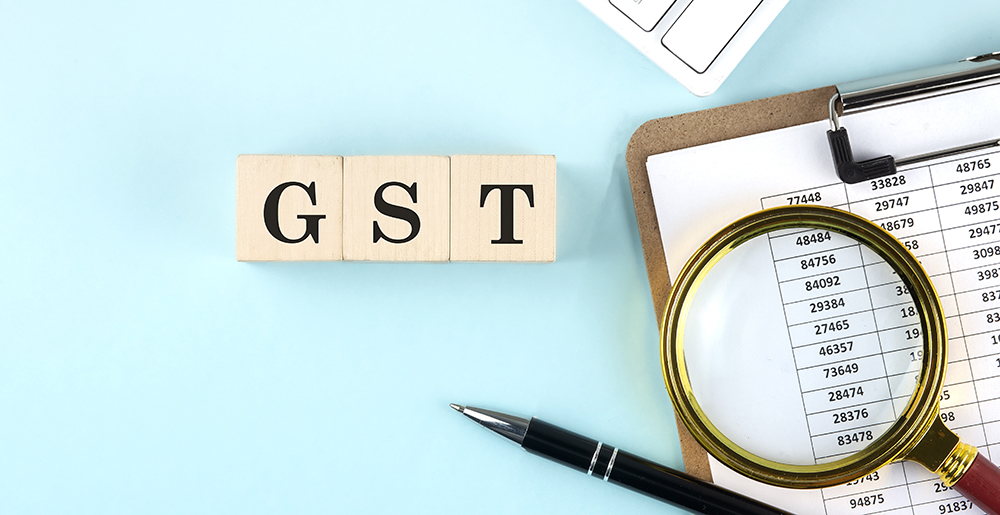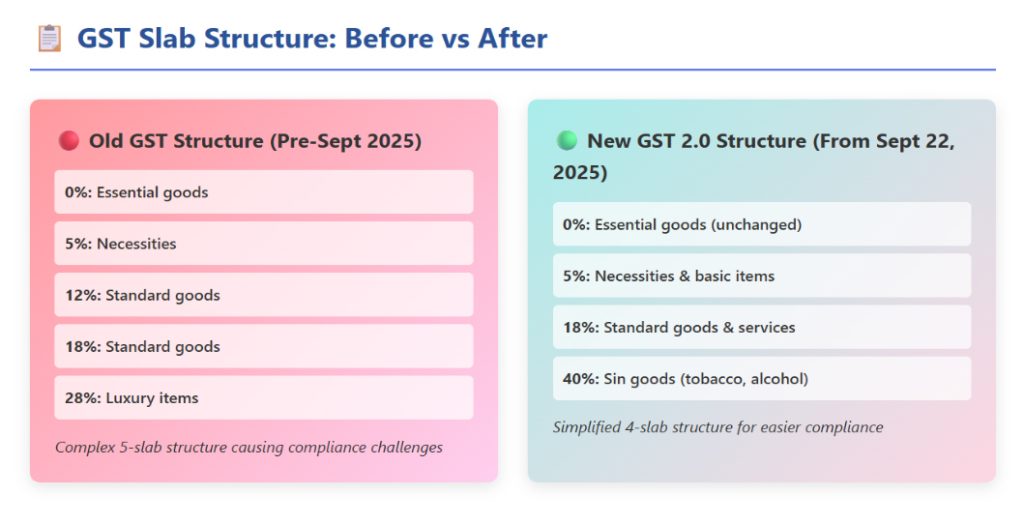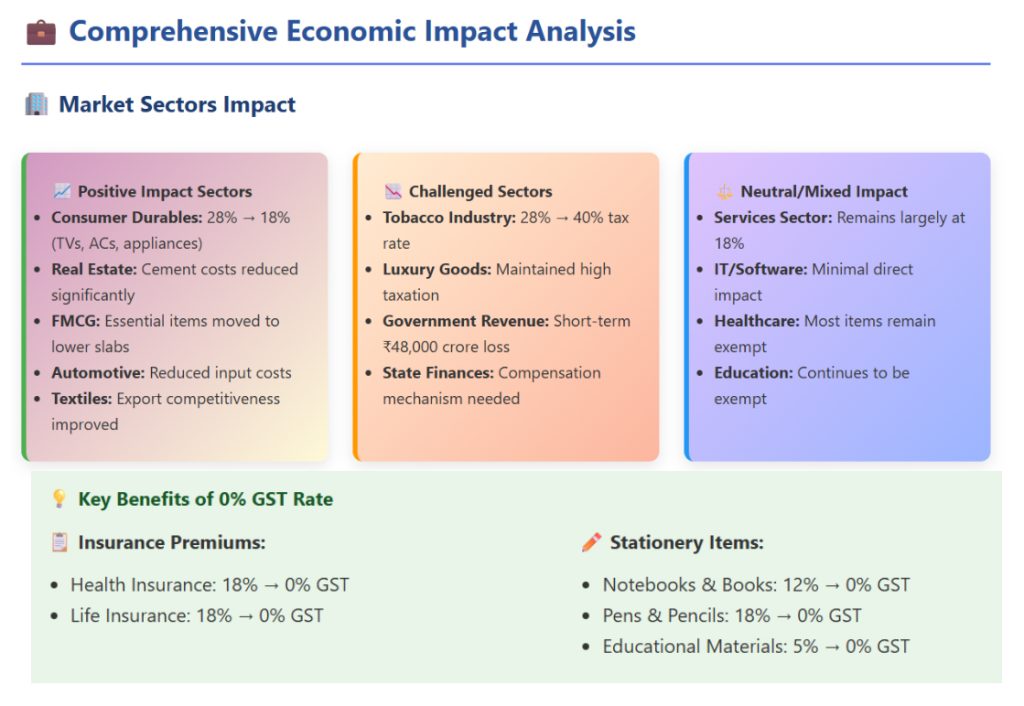
Revolutionary Tax Reform: GST 2.0
India’s tax landscape is undergoing a historic transformation with the implementation of GST 2.0 from September 22, 2025. This landmark reform simplifies the complex tax structure into just three main slabs (5%, 18%, and 40%), promising to boost consumption, ease compliance burdens, and fuel economic growth across sectors.
With the GST Council’s 56th meeting unveiling these next-generation reforms, the Indian economy is poised for a significant shift that will impact everything from household budgets to corporate strategies, market dynamics, and overall GDP growth.

Macroeconomic Implications
GDP Growth Impact
Expected boost of 1.5-2% in GDP growth due to increased consumption and improved manufacturing competitiveness. The multiplier effect of reduced taxes will stimulate demand across sectors.
Inflation Control
Reduced GST rates on essential items expected to provide deflationary pressure, helping control food and commodity inflation in the short term.
Manufacturing Boost
Lower input costs and simplified compliance will enhance manufacturing competitiveness, supporting the ‘Make in India’ and ‘Atmanirbhar Bharat’ initiatives.
Employment Generation
Increased economic activity expected to create indirect employment opportunities across manufacturing, retail, and services sectors.

Key Sectors Affected by GST Cuts
- Consumer Goods (FMCG): Lowering GST could directly make daily-use items cheaper.
- Automobiles: High GST rates (28%) have long been a burden on this industry. Cuts could revive sales.
- Real Estate: Lowering GST on construction and housing could boost demand in this sector.
- Insurance Sector: High GST on insurance premiums has made life, health, and general insurance costlier for middle-class families. GST-free (nil rate) here can encourage higher insurance penetration, boosting long-term financial security for households.
Stationery and Education Supplies: Making stationery GST-free (nil rate) directly benefits students, parents, and schools. Lower education-related expenses help families, while also supporting literacy and skill development in the country.


FAQs on GST Cuts and Economic Impact
Q1. What are GST cuts, and why do they matter?
GST cuts are reductions in the tax rate on goods and services. They matter because they directly influence consumer spending, demand, and overall economic growth.
Q2. How do GST cuts impact stock markets?
The markets respond positively as lower taxation increases demand, boosts company profitability, and creates bullish investor sentiment.
Q3. Which industries gain most from GST cuts?
FMCG, automobiles, real estate, e-commerce, insurance, and stationery sectors usually have the highest returns.
Q4. Can GST reductions lower inflation?
Yes, they lower prices, helping to check inflation. Nevertheless, higher demand can offset this effect in due time.
Q5. Have GST reductions impacted government revenue?
Indeed, lower collections in GST reduce government revenue, and this might raise the fiscal deficit, if not regulated properly.
Q6. How do GST cuts influence small businesses?
They support indirectly by spurring demands for products of MSME, and creating growth and expansion opportunities.
